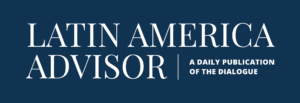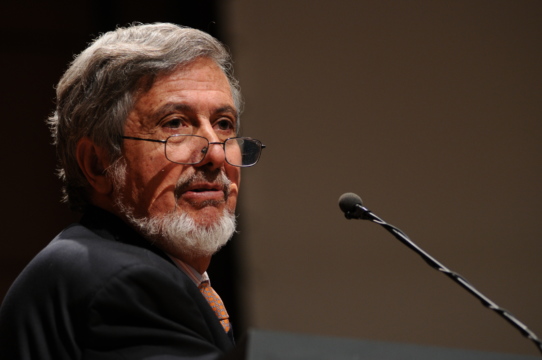
Remittances to Latin America & the Caribbean in 2014
In 2014, remittances to Latin America and the Caribbean grew 4%, reaching at least $62.3 billion.
A Daily Publication of The Dialogue
The United Nations Economic Commission for Latin America and the Caribbean (ECLAC) released a report last month forecasting that Latin America and the Caribbean will “resume the path of low growth seen prior to the Covid-19 pandemic,” expanding 2.7 percent on average this year. The deceleration in economic activity, which is half the rate of growth the region posted last year, is constraining the labor market recovery, especially for women, according to ECLAC. What factors are driving economic growth in Latin America and the Caribbean this year and next, and which subregions and countries are positioned to do better than others? What tools can policymakers use both to spur job growth as well as tackle inflation? How can vulnerable populations that are being left behind in the increasingly sluggish recovery most effectively be helped?
Alberto M. Ramos, managing director and head of Latin America economic research at Goldman Sachs in New York: “Across Latin America, real activity during the first half of this year benefited from the from ‘post-Covid’ economic normalization, particularly among the labor-intensive services sectors, additional fiscal stimulus in several places, terms of trade gains driven by rising commodity prices and gradually firming labor markets. We expect activity to decelerate visibly toward the end of 2022 and anticipate significant headwinds to activity by the first half of next year. Going forward, activity is expected to be negatively affected by rapidly diminishing marginal returns from Covid normalization, high and disseminated inflation, the lagged impact from recent monetary and financial tightening, gradually more exigent credit conditions and softer external impulse to growth given the expected deceleration of the global economy (softening of commodity prices and the terms of trade). Furthermore, in a number of places, including Argentina, Brazil, Chile, Colombia and Peru, heightened political and policy uncertainty are expected to affect sentiment, and through it, spending decisions by both households and firms. The high and highly disseminated inflation pressures remain a key policy challenge. Inflation should be fought with determination as it is a highly socially regressive tax on low-income households, and if left unchecked, it will undermine the underpinnings of growth and social progress. The best contribution central banks can give to deliver sustainable socially inclusive medium-term growth is to deliver low and stable inflation. Bringing inflation down to more moderate levels may have a short-term cost in terms of activity and employment, but leaving inflation unchanged will certainly have a much larger cost. And to fight inflation, interest rates are the most neutral, effective and efficient instrument to do so in the macro policy toolbox. Vulnerable segments of the population should be supported in the short-term by existing social safety net provisions, and over the medium term by investment-friendly policies that support growth and job creation.”
Ernesto Revilla, managing director and head of Latin America economics at Citigroup: “Latin America is doing better in 2022 than analysts expected only nine months ago. Economic activity has been more resilient, given the continued strength of the consumer, who is still enjoying the post-pandemic opening and freedom to indulge. High commodity prices have also helped the region, which is mostly commodity producing (outside Central America and the Caribbean), and global financial conditions have not tightened as much as high inflation would warrant. This increased optimism about 2022 is, alas, not translated to 2023. While growth forecasts for 2022 have increased meaningfully in the last months (particularly for Brazil, Colombia, Mexico, Panama and Uruguay), those of 2023 have come down. Indeed, external conditions—particularly because of higher rates in the United States, and the slowdown in China—will not be favorable to Latin America next year, while internal uncertainty associated with politics will continue weighing on investment and growth. In this uncertain and volatile environment, there will be differentiation across countries. There is a wide heterogeneity in Latin America between countries that have strong fundamentals (Mexico), complicated politics (Peru), medium-term fiscal challenges (Brazil), big current account deficits (Chile) or even a twin deficit—fiscal and external—problem (Colombia). Asset prices will react accordingly. In the face of a hazy outlook, policymakers should continue to focus on protecting the most vulnerable populations through well-targeted social programs, while constructing a credible narrative of medium-term growth and stronger fundamentals. This relatively calm period represents an opportunity to prepare for uncertain waters ahead.”
Elijah Oliveros-Rosen, lead economist for Latin America at S&P Global Ratings: “Latin America and the Caribbean, as much of the rest of the world, continues to recover from the pandemic downturn, in the midst of an increasingly uncertain and challenging global economic backdrop. The rising likelihood of weaker demand in the regions’ main trading partners, in particular the United States, but also Europe, means that the incomplete recovery from the pandemic could face a setback. The global inflation shock is pushing up interest rates around the world, notably in the United States, which is in turn increasing borrowing costs in the region, especially in those with a higher share of U.S. dollar-denominated debt. Under such dynamics, we expect the region to enter a period of below-trend growth through the rest of 2022 and into 2023, with higher-than-average inflation. Economies with strong central bank credibility, such as is the case in most of the major larger countries in the region, will be better able to keep inflation expectations anchored and eventually return them to target. Economies that are highly reliant on external demand, not just of goods, but also services, such as tourism, as is the case in the Caribbean, could see growth deteriorate substantially in the event that the United States and European economies enter a period of economic weakness. Households that were the most hurt by the pandemic downturn, mainly lower and middle incomes, are also the most vulnerable to setbacks. As a result, policies that provide safety nets to those income brackets, such as unemployment insurance, could be the most effective in supporting an inclusive economic recovery.”
Alfredo Coutiño, director for Latin America at Moody’s Analytics: “Latin America’s economic growth in 2022 is naturally converging to rates more consistent with the region’s production capacity. After the post-pandemic rebound in 2021, the region is on track to post growth of around 2.9 percent in 2022, with Colombia reporting the highest rate, followed by Uruguay and Argentina among the largest economies. However, an important push is given by the better-than-expected performance of Brazil, whose economy is moving toward growth of at least 2 percent this year. Despite the headwinds faced during the first half of the year, the region benefitted from favorable commodity prices and by the demand for primary goods generated by the supply disruptions caused by geopolitical problems. In net, favorable terms of trade benefited the region during the first half of the year, thus helping Latin American economies to navigate the turbulent waters. By subregions, the Caribbean is leading the growth, thanks to the double-digit rate in Guyana and the increasing flow of tourism to the area, followed by Central America. The best recipe to create employment and improve social well-being is by promoting steady and healthy economic growth, and this implies accelerating the accumulation of capital to expand production capacity and stimulate productivity. Price stability requires a set of policies that keep the economy working around its steady state, avoiding the abuse of prolonged expansionary policies. More employment and better wages contribute to improve social well-being, but this requires a significant effort in terms of investment in human capital from both private and public sectors. Latin American governments need to understand that economic policy is not a source of growth, but rather an instrument to moderate the ups and downs of the economy around its potential capacity. Thus, to create production capacity, they need to promote investment in physical and human capital.”
Carlos A. Végh, Fred H. Sanderson Professor of International Economics at Johns Hopkins University’s School of Advanced International Studies: “After the Covid-induced recession of 2020 (when GDP fell by 7 percent), the region had a strong rebound in 2021 with GDP growing by 6.8 percent. This year, with estimated growth of 2.5 percent, signals the return to a more normal, yet relatively low, growth rate, in line with pre-pandemic years when growth was constrained by chronically low productivity, a lack of private and public investment, and dismal public infrastructure. Naturally, all else equal, the current commodity boom should imply that net commodity exporters (most of South America) will fare better than net commodity importers (the Caribbean and most of Central America). The long-term structural problems have been compounded this year by three factors: 1.) lingering supply-chain bottlenecks related to the pandemic; 2.) higher food and energy prices due to Russia’s invasion of Ukraine; and 3.) the U.S. Federal Reserve’s sudden tightening of monetary policy, which has led to depreciating currencies in the region and, hence, more inflationary pressures. As a result—and in spite of lackluster growth—many central banks in the region have aggressively raised policy interest rates to prevent inflation from reaching double digits. From a social point of view, the most vulnerable, who already suffered disproportionately under the pandemic, are being hit the hardest by the rise in basic food and energy prices. Poverty will thus continue to grow, in particular among women and minorities. To protect them, governments should stick to conditional cash-transfer programs and ensure the provision of basic health, education and other essential social services. Careful budgeting will be needed since fiscal space is limited and public debts are large.”
 The Latin America Advisor features Q&A from leaders in politics, economics, and finance every business day. It is available to members of the Dialogue’s Corporate Program and others by subscription.
The Latin America Advisor features Q&A from leaders in politics, economics, and finance every business day. It is available to members of the Dialogue’s Corporate Program and others by subscription.
In 2014, remittances to Latin America and the Caribbean grew 4%, reaching at least $62.3 billion.
With the recent decline in commodity prices, why have some countries have fared better than others?
With Brazil’s state oil company Petrobras engulfed in a massive corruption scandal, the government looks poised to introduce an energy sector overhaul.
 The Caribbean will experience 4.7 percent growth this year, higher than Latin America and the Caribbean as a whole, according to ECLAC. Santo Domingo is pictured. // File Photo: Government of the Dominican Republic.
The Caribbean will experience 4.7 percent growth this year, higher than Latin America and the Caribbean as a whole, according to ECLAC. Santo Domingo is pictured. // File Photo: Government of the Dominican Republic.

